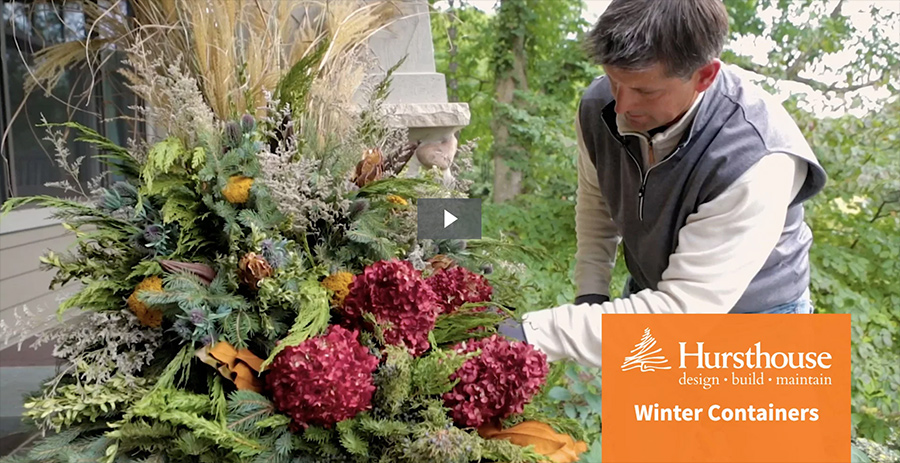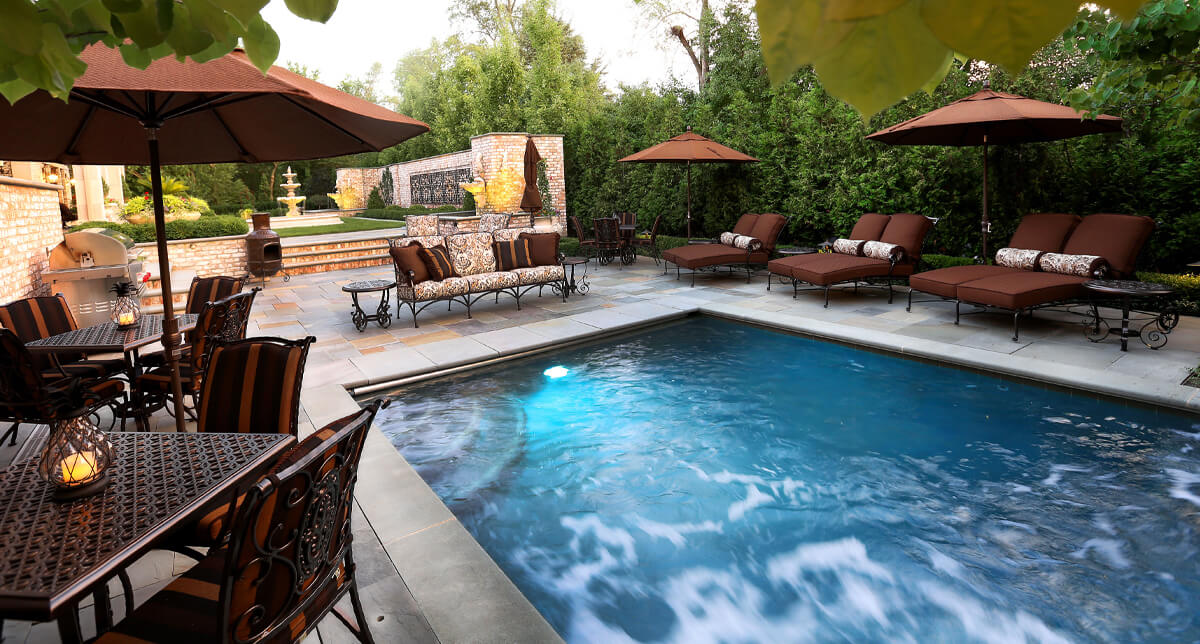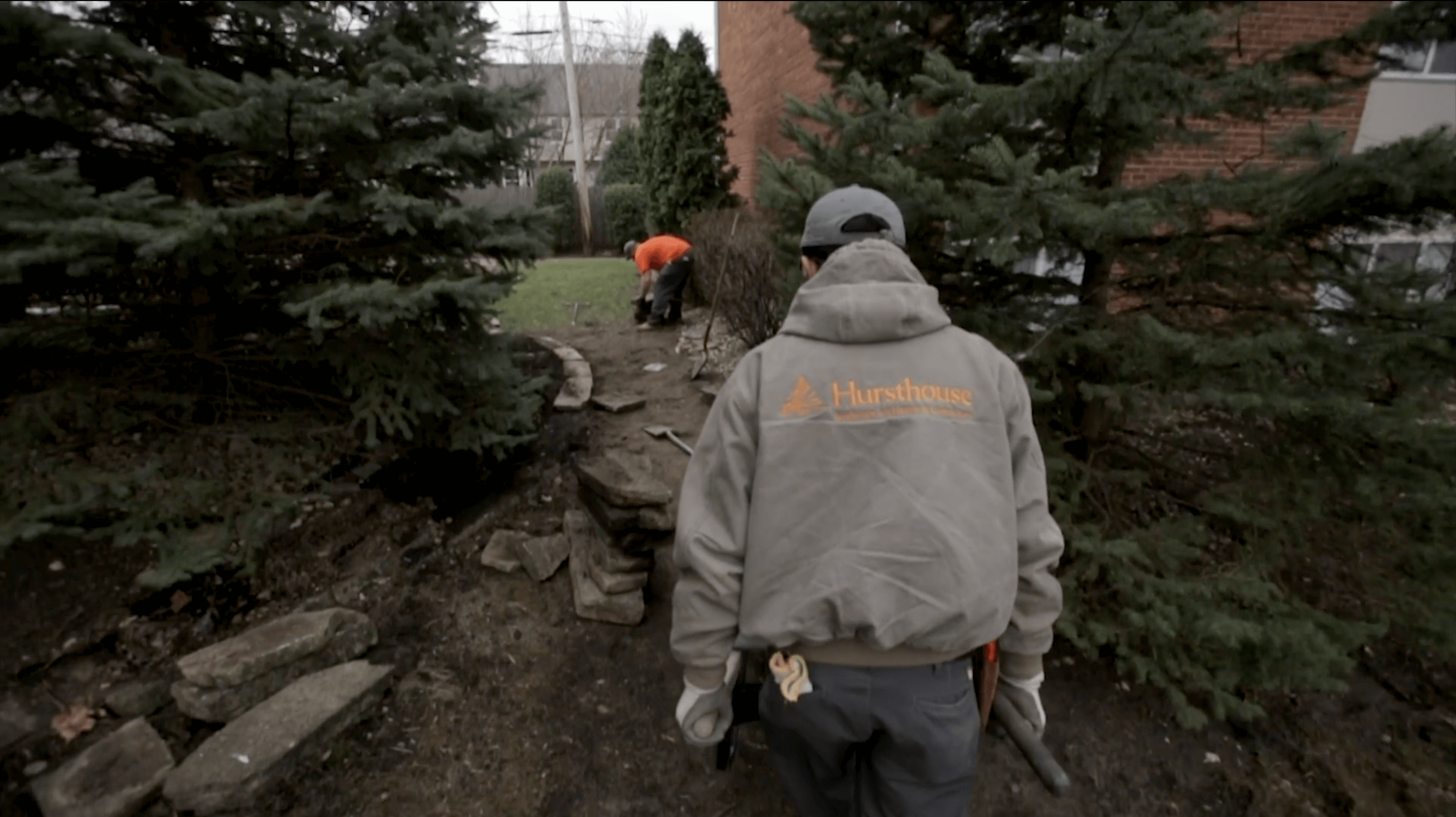Who doesn’t love an outdoor party during summer? A well-designed garden can be the perfect space to host a celebration, whether it’s a wedding, a family reunion or a casual get-together with friends and neighbors.
A garden should feel comfortable and be safe to use not only during the day, but at night since many parties continue after dusk. That’s where thoughtfully placed lighting around steps, changes in grade, doorways and paths is essential. A fireplace or a fire pit keeps the party mood going long after the sun sets.
Outdoor spaces have similar characteristics to those inside—think about your living room, family room or kitchen. As landscape architects, we think about those spaces—outdoor rooms—as a sequence where homeowners and guests travel from one spot to the next, just as you would indoors.
First Impressions Count
The focal point of a residential property is always the house and the area outside the front door. For more than a century, tastemakers have said that a house is like a fine painting and the landscape is the frame. The landscape is there to frame and enhance the home, not overwhelm it or distract from it.
When family and friends come to visit, most homeowners enjoy showing off their home and creating an inviting entryway. A common mistake, which we often wind up correcting, is an existing main walkway that was built too narrow for comfort.
The primary walk from the driveway or front sidewalk to the front door should be at least four feet wide. That’s been the standard since Frank Scott penned, “The Art of Beautifying Suburban Home Grounds” in 1870. The idea then was that two people should be able to walk side-by-side to the front door without stepping on flowers or the lawn. But over the years, many builders put in cheaper, narrow bands of concrete that force visitors to practically walk single file or side-by-side with one person walking partly on the grass to get to the front entry.
A well-designed arrival and entry should complement the house and provide a pleasant experience for you and your guests. Outside your front door is a gathering place and a transition to indoors—we consider it one of the most significant outside spaces on a residential site. The hardscape used on the walkway and landing area—stone, steps, pavers, walls—should help frame the house while ornamental trees, flowering bushes, annuals and potted plants add a pleasing “welcome to our home” feel.
When you’re thinking about future parties in your garden, it’s all about preparation well in advance. “Planning is definitely needed when we’re thinking about a flower display,” says Bill Chorvat, maintenance division manager at Hursthouse. “Events that really make a statement have seasonal displays that not only complement the theme of the event, but also blend seamlessly with your landscape.”
Outdoor Dining
If you’re like many homeowners, your outdoor patio, deck or terrace may hold a table, chairs and an umbrella. That serves a family for casual meals, but for big gatherings, the space should feel large as well as functional. The overall size of the patio or deck is generally determined by the number of people who will use the space. We also take into consideration the size of the furniture, such as tables, chairs, chaise lounge, as well as a portable or permanent grill, an outdoor kitchen, fire pit or fountain. All of these elements make up the garden’s entertaining space.
For seating or standing on a deck, patio or terrace, there are functional size requirements that dictate comfort. A rule of thumb tells us that a person standing on a patio needs about 5 square feet of space, while people standing in conversation need about 8 square feet per person to feel comfortable rather than cramped.
For a small round patio table and four chairs, you need a 10’ by 10’ space or larger. The “walk-around” space is also important. For comfort, an extra 2 or 3 feet of hard surface around the patio furniture allows people to stay on the paving rather than stepping onto the lawn or into planting beds.
Getting the Garden Ready
In some cases, big celebrations call for an outdoor tent with rented tables and chairs. Tents work best on level lawns where chairs and tables will be stable. The Hursthouse team can help you determine the most suitable spot for a tent.
“Creating that special look or theme does take time and planning,” Chorvat says. “There are so many variables with each landscape, that having a meeting one year in advance would determine what is actually needed and when a final plan would be completed.”
Chorvat offers several suggestions for melding your event with the house and garden. “Being creative takes time,” he says. “We like to think about the color combinations, accents and themes or even displays.” For example, he suggests coordinating seasonal flower color with the type of event. For example, it could be school colors if it’s a graduation party or simply repeating colors used inside your home.
If you’re planning an event for next spring or summer, now’s the time to start thinking about flower choices. “Growers start many flowering plants in January, so specialty or unique plants that would make a statement in the garden must be ordered in December.”
Planning now is the key. “The type of garden, its current condition and the timing of the event will determine what is needed for the best show of the garden,” Chorvat says. Adding or dividing plants may be done the prior year so that the garden is in tip-top shape months down the road. “Garden architecture, like bird houses, trellises, arbors and other ornaments, can be a nice complement to the garden and should be planed for well in advance.”
To get the garden ready before an event, Chorvat recommends a good clean up in late March or early April. Mulching, weeding, edging and creating new bed-lines, if necessary, are also done at the time. Two weeks before the event, the Hursthouse team does additional weeding, removes spent flowers, and plants annuals or perennials for additional color and interest. And a week before the event, “We fine-tune the bed lines and turf next to paved areas,” Chorvat says. “We may prune the shrubs or ornamental plants for a layered, balanced appearance and do a final mulching.”
Down the Road
Planning an outdoor party or big celebration takes time and care. That’s also true when it comes to analyzing, designing and installing a landscape. It doesn’t happen overnight. The design process is a series of steps beginning with an initial meeting at the home all the way to the installation. Although some homeowners might assume that the designer simply draws the final plan after the first meeting, a good deal of thought and analysis takes place long before the drawing begins.
The design process is much more involved than just selecting and arranging plants or removing and installing a new front walk. There are preliminary designs, the selection of materials for paths, patios, decks, steps, pergolas, arbors, trellises, walls or fences, the development of a master plan, and acquiring necessary permits and scheduling installation.
Construction details often accompany the layout, grading and planting plans. And, then there’s the plant selection—trees, shrubs, perennials and vines. Depending on the scope of the work, some small projects may be done in 90 days or less. But, when it comes to creating the perfect outdoor oasis for entertaining and parties, allowing plenty of time for the process to unfold is the key. Like throwing a great party, details matter. See the Hursthouse design process video for a behind-the-scenes sneak peek. (link).


